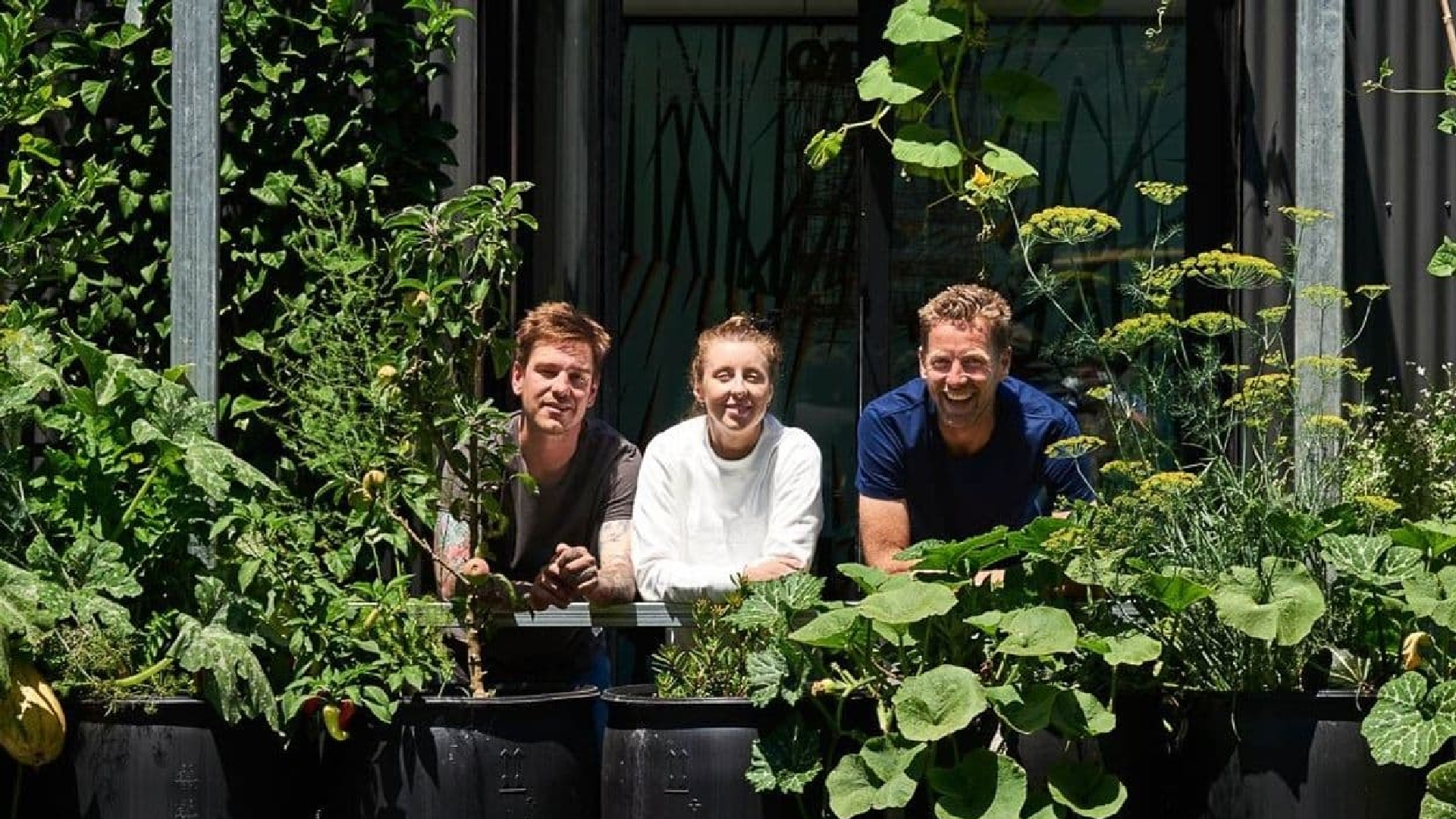Greenhouse by Joost takes a pro-active, if privileged, approach to saving the planet

Sustainability documentary Greenhouse by Joost suggests we can save the planet by building zero-waste houses. Who’s going to pay for them isn’t really addressed, but fans of Grand Designs will enjoy this environmentally-focused architecture film, writes Stephen A Russell.
Greenhouse by Joost
At this late stage in the destroy your own natural habitat game, it’s not exactly a revelation to say that humans are the absolute worst residents of planet Earth. So much so, that impending environmental doom can be too overwhelming, prompting us to switch off and stick our heads in the sand, thereby exacerbating the communal problem we all face.
Despite this inconvenient truth, specific stats still have the power to shake us out of our stupor, like the one that opens Bruce Permezel and Rhian Skirving’s Melbourne International Film Festival (MIFF) Audience Award-winning documentary Greenhouse by Joost. “The most destructive thing we humans do is eat, which is madness,” narrates Holland-born Joost Bakker, the zero-waste florist-turned-restaurateur and social media-friendly environmental campaigner who is the film’s subject. He notes that humanity chucks out a staggering 30-40% of food waste daily, despite many of us going hungry. Then there are profoundly unsustainable agricultural practices.
During the film’s dappled light opening sequence, depicting Bakker foraging in the woods, he stresses that nature doesn’t do this. It’s a closed loop, with everything that dies going back into the system, offering up that spark of ex-life for another organism’s benefit.
But humanity’s rapacious hunger is wholesale destroying the natural habitats we were symbiotically connected to for millennia. Later, Bakker depressingly notes that even apparent solutions can be part of the problem. Massive projects centred on supposedly sustainable forestry—we chop down 27,000 trees a day just to make toilet paper—are often done in a way that does not encourage flourishing ecosystems in the undergrowth.
So what is the solution? It would be thoroughly depressing to sit through a documentary entirely focused on the now widely known problem and not what we can each do about it.
Greenhouse by Joost introduces us to Bakker’s greenhouse idea, or homes that double as a ‘future food system’. Expanding on the concept of now-closed Silo, billed as the world’s first zero-waste restaurant, the film traces the next step as Bakker and his team build a pop-up, zero-waste home sandwiched between the urban meeting place that is Melbourne’s Federation Square and the banks of the Yarra River.
Every element of the build uses recyclable materials and low-impact processes. That includes wall panels made from compacted hay, with vast swathes of the stuff burned by farmers every day. They also shun a concrete base—cement production is a colossal carbon emitter—in favour of a battalion of upcycled plant pots festooning the roof. Tonnes of plant-producing soil anchor the building. Worms from that soil feed the fish and freshwater yabby (lobster-like crustaceans) kept in aquaponic pods. Fish poop goes back into the gardens that produce all the fruit and veg. There are also hives on the roof, solar panels galore and water catchments.
Bakker’s hospitality mates, celebrity chefs Matt Stone and Jo Barrett, commit to living in it for a year while also hosting dinners for the public using only what they can produce at home, thereby proving the greenhouse idea. Only anyone who regularly watches ambitious architectural projects show Grand Designs will know that these ideas never run smoothly. The pandemic, arguably a symptom of our environmental vandalism, delays the build during lockdowns. Fish die before Stone and Barrett move in. Anyone paying attention to nature’s woes will freak out when there’s a mass bee death.
They get there in the end, and it’s intriguing to see all the micro ecosystems at play. But the documentary has some glaring oversights. Bakker, ever the showman, dominates. We don’t hear enough from the architects, builders, or environmental experts who might expand the film from the specific to the bigger picture. It’s also readily apparent that to build something like this, you’d need a heap of cash behind you—which Bakker obviously does, going by glimpses of his regional home.
There is a vanishingly short sequence in which we see people on social media get on board with making zero-waste changes in their own life. How many of these people are also influencers with huge followings (who can certainly help spread the word) as opposed to everyday folks is another question. It’s disappointing that Permezel and Skirving’s syrupy-scored documentary doesn’t at least try to connect to less-privileged audiences with more concrete suggestions that can be folded into everyday life without a massive budget.
That grumble aside, Bakker is undoubtedly a captivating speaker, and as that MIFF award shows, Greenhouse by Joost will appeal to folks who really do want to be a part of the solution. If only the documentary’s delivery was a little less earnestly naive.


















